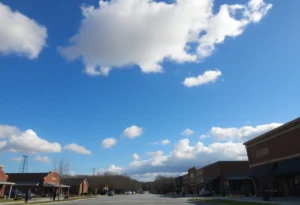High School Sports Realignment Draft Released in Utah
Salt Lake City, Utah – The UHSAA Board of Trustees met on Tuesday to announce the first draft of high school sports realignment for the upcoming 2025-26 and 2026-27 school years. This realignment process takes place every two years and is based on changes in enrollment numbers across schools. These adjustments aim to balance competition and ensure fair play among different schools.
The UHSAA utilizes two distinct alignments: one for football and another for all other sports. Schools are categorized into classifications that may include “bubble schools,” which are those that could be moved up or down a classification based on their performance and enrollment numbers. Schools that find themselves on the bubble have the option to appeal to the UHSAA for a potential move.
Schools can submit their requests to change classifications until December 4. Following that, a public hearing will be held via Zoom on December 11. The Board of Trustees will make the final decisions regarding classifications and regions during their meeting on December 19.
Currently, the number of teams in each classification has not been finalized. The UHSAA is evaluating schools using a new criterion developed by Nate Marshall, the executive director of Providence Hall. Each school has a Member School Profile that assesses competitiveness, factoring in RPI rankings and state tournament results. These profiles help assign a Z score number to bubble schools, guiding the Board’s decisions on classifications.
Although specific changes are still being discussed, schools like Corner Canyon are already expected to appeal for a move up to 6A for all sports. Meanwhile, both Ben Lomond and Ogden schools are anticipated to be placed in 3A due to their considerable rates of students on free or reduced lunch.
Additionally, a new school, Deseret Peak, opening in Tooele in 2025, was not included in this draft as it will not have seniors during its first year. Deseret Peak is projected to compete in 4A during its initial two years.
As the UHSAA continues to refine these classifications, schools will be eagerly awaiting the updates in the coming weeks.

Author: STAFF HERE Chapin
CHAPIN STAFF WRITER The CHAPIN STAFF WRITER represents the experienced team at HEREchapin.com, your go-to source for actionable local news and information in Chapin, Lexington County, and beyond. Specializing in "news you can use," we cover essential topics like product reviews for personal and business needs, local business directories, politics, real estate trends, neighborhood insights, and state news affecting the area—with deep expertise drawn from years of dedicated reporting and strong community input, including local press releases and business updates. We deliver top reporting on high-value events such as the Chapin Christmas Parade, Fourth of July Celebration, and the Chapin Fall Festival. Our coverage extends to key organizations like the Chapin Chamber of Commerce and the Lexington School District One, plus leading businesses in retail and recreation that power the local economy such as Lake Murray Tourism and the Chapin Visitor Information. As part of the broader HERE network, including HEREaiken.com, HEREbeaufort.com, HEREchapin.com, HEREcharleston.com, HEREclinton.com, HEREcolumbia.com, HEREgeorgetown.com, HEREgreenwood.com, HEREgreenville.com, HEREhiltonhead.com, HEREirmo.com, HEREmyrtlebeach.com, HEREnewberry.com, HERErockhill.com, HEREspartanburg.com, HEREaustin.com, HEREcollegestation.com, HEREdallas.com, HEREhouston.com, and HEREsanantonio.com, we provide comprehensive, credible insights into South Carolina's dynamic landscape.

























